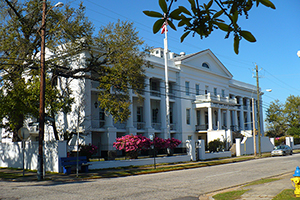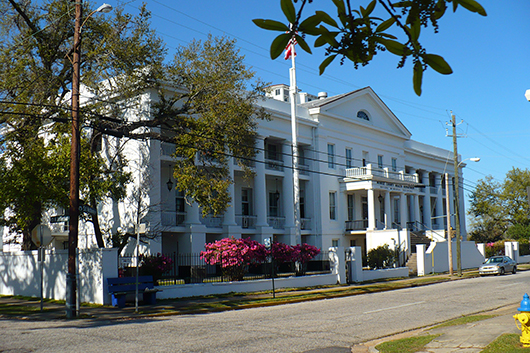
Many buildings endure prominently from the Port City’s past, while others stick around to decay.
But a new historic tax credit, approved by Gov. Robert Bentley in May, may help lift the lagging development into a new existence. The antidote could be the state’s $20 million worth of tax exemptions provided annually, some say, combined with federal tax exemptions.
Only time will tell.
Lawmakers approved the program for the next three years, enough time to test the public’s appetite.
“Some of the senators wanted to see what the impact would be,” said Elisabeth Sanders, president and chief executive officer for the Downtown Mobile Alliance.
“We believe that we will be able to show significant projects in that period of time.”
The Alliance partnered with another organization in Birmingham to persuade lawmakers to adopt the tax break three years ago. Both organizations hoped to spur interest in their cities’ old homes and buildings downtown.
“We sort of naively went up there with this package of incentive bills,” Sanders said.
The two groups’ argument was simple: Alabama was one of the only states in the region without such a program, Sanders said. Places with deep architectural roots like Charleston, S.C., Savannah, Ga. and New Orleans all provided the incentive.
In 2011, a new market tax credit was passed, which can be used for community development in areas mired with economic difficulty and blight. The historic tax credit was passed a year later.
The program has generated some excitement for downtown Mobile and surrounding neighborhoods.
“It could be a game changer,” said Tilmon Brown, a property developer and historic preservation advocate, “with one reserve caveat: We don’t have a whole lot of them left.”
Other than the Gayfers building on Dauphin Street and the Van Antwerp Building on Royal Street there aren’t many large properties, Brown said. The restoration of the Pizitz Building in Birmingham is already lined up to take as much as $5 million, the maximum allowed for a commercial project.
Mobile still has a lot to gain, said Brown, who has worked on historic restoration projects in the past. The scope of activity may be more modest.
As historic face-lifts go in Mobile, Larry Posner’s Fort Conde Village is one of the more prominent examples. Posner, at least in part, used the federal program that offers a 20 percent exemption.
Historic restoration conjures an image of grand renovations for property buyers. “They think doing a historic property costs more than doing it new,” Brown said.
“You don’t have to do a museum-quality project like at Monticello or Mount Vernon.”
A small cadre of Mobile residents and historic preservationists met recently for a forum on the new program. A five-member panel gave advice and discussed ways to take advantage of the new program.
“If you are going to apply you better know ahead of time whether you are going to qualify,” said John C. Williams, an architect who has worked on several projects in New Orleans.
Williams warned that the process can be complex, especially if it is done it alone. Changes like moving a staircase or replacing a window become crucial details when the property is evaluated.
“I’m trying to get educated on the commercial and the residential side (of the program),” said Jeremy Milling, owner of Milling Commercial Realty, who was also on the panel.
Milling holds the listing for the old Press-Register building on Government Street and the Buick Building on St. Louis Street.
In the months since the program was authorized, Milling said he has seen more interest from out-of-town buyers in certain historic properties. Many of them say outright that the new program piqued their interest in Mobile, he said. “The thing that has been exciting to me is the alternative uses they come up with.”
As downtown continues to change, Milling said, there may be an unmet need for things New Orleans has gravitated toward, like artists housing.
“The pitfall may be in saying that (New Orleans) is comparable apples-to-apples with Mobile,” Milling said. “I know there are a couple of projects that have been completed there that could be done here, but at a smaller scale.”
Copyright 2013 Associated Press. All rights reserved. This material may not be published, broadcast, rewritten, or redistributed.
AP-WF-09-19-13 1339GMT
ADDITIONAL IMAGE OF NOTE



